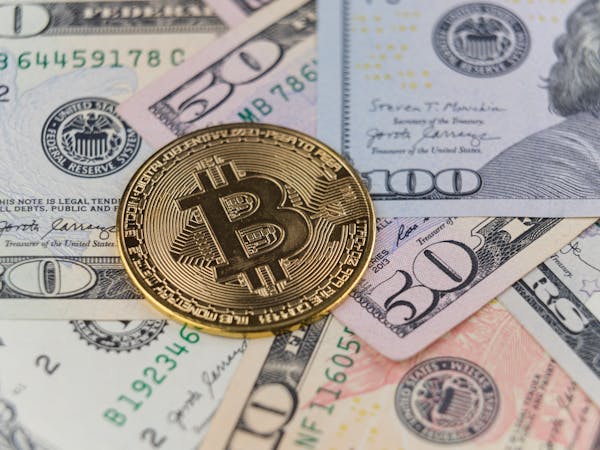Ways to Convert Cryptocurrency to Cold Cash
Cryptocurrency has become a mainstream asset for many investors, and its use as a digital currency has gained widespread acceptance across the globe. Despite the growing adoption of Bitcoin, Ethereum, and other cryptocurrencies, there are still many situations where users need to convert their digital assets into traditional “cold cash.” Whether you’re looking to make a large purchase, pay off debt, or simply secure profits from your investments, knowing how to turn cryptocurrency into fiat currency is essential.
In this comprehensive guide, we will cover the best ways to convert cryptocurrency to cold cash, discuss the pros and cons of each method, and provide you with tips to ensure a smooth and safe conversion process.
Table of Contents
- Understanding the Basics: What is Cryptocurrency?
- Why Would You Want to Convert Cryptocurrency to Cash?
- Best Methods to Convert Cryptocurrency to Cash
- Centralized Cryptocurrency Exchanges
- Peer-to-Peer (P2P) Platforms
- Bitcoin ATMs
- Crypto Debit Cards
- Over-the-Counter (OTC) Brokers
- Crypto-to-Fiat Transactions at Crypto Payment Processors
- Tax Considerations When Converting Cryptocurrency to Cash
- Security and Privacy Concerns
- The Future of Crypto-to-Cash Conversions
- Conclusion: Choosing the Best Option for You

1. Understanding the Basics: What is Cryptocurrency?
Before diving into the different ways to convert cryptocurrency to cash, it’s important to understand what cryptocurrency is and how it works. Cryptocurrency is a digital or virtual currency that uses cryptography for security. Unlike traditional fiat currencies like the US dollar or Euro, cryptocurrencies operate on decentralized networks, such as blockchain technology, which ensures transparency and security without the need for intermediaries like banks.
The most well-known cryptocurrencies include Bitcoin (BTC), Ethereum (ETH), and Ripple (XRP), but there are thousands of altcoins available on the market, each with different features and use cases.
Cryptocurrencies can be used for a variety of purposes, such as buying goods or services, investing, or simply transferring value across borders. However, since the traditional financial system is still largely based on fiat money, there are many instances where converting cryptocurrency into cash is necessary.
2. Why Would You Want to Convert Cryptocurrency to Cash?
While many people choose to hold onto their cryptocurrencies for long-term investments, there are several reasons why someone might want to convert their digital assets into cash:
2.1 Real-World Spending
Cryptocurrency adoption has been growing, but most merchants and service providers still only accept fiat currency. To pay for everyday goods and services like groceries, rent, or utilities, converting crypto into cash may be necessary.
2.2 Profit-Taking and Financial Security
Cryptocurrency markets are notoriously volatile, and investors often take profits when the value of their holdings has increased. Converting crypto into cash allows you to lock in those gains and protect yourself from future market downturns.
2.3 Paying Off Debt or Large Expenses
If you need to cover large expenses, such as a mortgage, student loans, or medical bills, converting crypto into cash is often the most straightforward option. The liquidity of cash makes it easier to meet these obligations.
2.4 Regulatory and Tax Compliance
In some countries, regulatory or tax considerations may make it necessary to convert your cryptocurrency into cash. Governments often require taxes to be paid in fiat currency, and certain financial transactions may be easier to complete using traditional money.
3. Best Methods to Convert Cryptocurrency to Cash
There are several ways to convert cryptocurrency to cash, each with its own advantages and disadvantages. Here, we explore the most popular and reliable methods for exchanging your digital assets for fiat money.
3.1 Centralized Cryptocurrency Exchanges
Overview
One of the most common and convenient methods of converting cryptocurrency to cash is through centralized cryptocurrency exchanges like Coinbase, Binance, Kraken, or Gemini. These exchanges offer a user-friendly platform where you can trade your crypto for fiat currencies, such as US dollars, Euros, or other local currencies.
How It Works
- Create an account: You need to sign up for an account on the exchange and complete identity verification (KYC).
- Deposit cryptocurrency: Transfer your cryptocurrency from your wallet to your exchange account.
- Sell cryptocurrency: Once the crypto is in your exchange account, you can sell it for your chosen fiat currency.
- Withdraw cash: After selling your crypto, withdraw the funds to your bank account.
Pros
- User-friendly: Most exchanges have simple interfaces that make it easy for beginners to navigate.
- High liquidity: Centralized exchanges typically have high trading volumes, ensuring fast and efficient conversions.
- Wide selection: Support for multiple cryptocurrencies and fiat pairs.
Cons
- Fees: Transaction fees and withdrawal fees can add up, especially on certain exchanges.
- KYC requirements: Most exchanges require identity verification, which may affect privacy.
- Processing time: It can take a few business days to withdraw funds to your bank account.
3.2 Peer-to-Peer (P2P) Platforms
Overview
Peer-to-peer (P2P) platforms, such as LocalBitcoins, Paxful, or Binance P2P, allow users to directly trade cryptocurrency with other individuals without the need for a centralized intermediary. P2P platforms provide a marketplace where buyers and sellers can negotiate terms and exchange crypto for cash.
How It Works
- Create an account: Register on a P2P platform and verify your identity if required.
- Browse offers: Search for buyers who are offering to purchase cryptocurrency in exchange for fiat currency.
- Agree on terms: Negotiate the terms of the trade, including price, payment method, and transaction time.
- Send cryptocurrency: After agreeing on the terms, send the cryptocurrency to the buyer.
- Receive cash: The buyer transfers the agreed-upon amount of fiat money using your chosen payment method (bank transfer, PayPal, etc.).
Pros
- Privacy: P2P platforms often provide more privacy than centralized exchanges, as KYC requirements may be minimal or optional.
- Direct transactions: You deal directly with buyers, allowing for potentially better rates.
- Multiple payment methods: You can receive cash through a variety of methods, such as bank transfers, mobile payments, or even cash in person.
Cons
- Risk of scams: P2P platforms carry the risk of fraud, as you are dealing directly with individuals. Make sure to use escrow services provided by the platform to avoid losing your funds.
- Lower liquidity: Finding a buyer willing to pay your desired rate may take longer compared to centralized exchanges.
3.3 Bitcoin ATMs
Overview
Bitcoin ATMs are physical machines that allow users to buy or sell Bitcoin and, in some cases, other cryptocurrencies. These machines are becoming increasingly popular in major cities around the world, providing a fast and convenient way to convert cryptocurrency to cash. Bitcoin ATMs are ideal for small to medium-sized transactions.
How It Works
- Find a Bitcoin ATM: Use an online directory like CoinATMRadar to locate a nearby ATM.
- Send cryptocurrency: Once you’ve reached the ATM, send your Bitcoin (or other supported cryptocurrency) to the address provided by the machine.
- Withdraw cash: After the transaction is confirmed on the blockchain, the machine dispenses cash in your local currency.
Pros
- Instant cash: Bitcoin ATMs offer one of the fastest ways to convert crypto into cash.
- No need for a bank account: Perfect for users who want to avoid traditional financial institutions.
- Convenient locations: Bitcoin ATMs are often located in public places, making them easy to access.
Cons
- High fees: Bitcoin ATMs tend to charge higher transaction fees (5-10% or more) compared to online exchanges.
- Limited availability: Not all areas have Bitcoin ATMs, and they might not support a wide range of cryptocurrencies.
3.4 Crypto Debit Cards
Overview
Crypto debit cards, like the Crypto.com Visa Card, Binance Card, and Coinbase Card, allow you to spend your cryptocurrency directly at any merchant that accepts traditional debit or credit cards. These cards automatically convert your crypto to fiat currency when you make a purchase or withdraw cash from an ATM.
How It Works
- Order a crypto debit card: Sign up for a crypto debit card from a provider like Crypto.com, Binance, or Coinbase.
- Top up your card: Load the card with cryptocurrency from your wallet.
- Make purchases or withdraw cash: Use the card to pay for goods and services or withdraw cash from an ATM. The card provider will automatically convert your crypto to fiat at the time of transaction.
Pros
- Convenient for everyday use: Crypto debit cards are perfect for making regular purchases or withdrawing cash from ATMs.
- Widely accepted: You can use crypto debit cards anywhere Visa or Mastercard is accepted.
- Real-time conversion: No need to manually sell your cryptocurrency; the card handles conversion at the point of sale.
Cons
- Fees: Some cards come with fees for transactions, currency conversion, or ATM withdrawals.
- Limited crypto support: Not all cryptocurrencies are supported by every crypto debit card.
3.5 Over-the-Counter (OTC) Brokers
Overview
Over-the-Counter (OTC) brokers offer a personalized service for converting large amounts of cryptocurrency into cash. These brokers facilitate transactions between large buyers and sellers, ensuring discretion and security for high-value trades.
How It Works
- Find an OTC broker: Contact a reputable OTC brokerage service, such.

